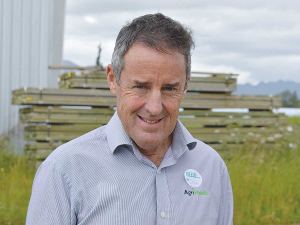Understanding udder health
Last month we talked about why dry cow management is critical, though often overlooked. This month I wanted to dive further into the dry period’s importance to udder health.
 Steve Cranefield, AgriHealth, says mastitis remains the biggest animal health issue in the dairy industry and farmers should take more pride in tackling mastitis.
Steve Cranefield, AgriHealth, says mastitis remains the biggest animal health issue in the dairy industry and farmers should take more pride in tackling mastitis.
Mastitis expert Steve Cranefield is urging farmers to take more pride in lowering their herd’s somatic cell count.
Cranefield made the comments at a Smaller Milk and Supply Herds (SMASH) field day at Tania White’s farm, at Te Aroha, last month.
White’s farm recorded an average somatic cell count of 31,180 – the second lowest among Fonterra suppliers’ last season. She was pipped by her parents Graham and Glenys Bell, who farm up the road and recorded an average SCC of 30,050.
Cranefield, who spoke at the field day, gave the Bells and White a big tick for handling SCC, produced by a cow to fight mastitis.
“They are some of the best in the country,” he told Dairy News.
“There’s a huge element of pride involved; they know they produce the cleanest milk in the country.”
Cranefield says mastitis remains the biggest animal health issue in the dairy industry and farmers should take more pride in tackling mastitis.
He says there are a lot of benefits in keeping SCC down in cows – such as production gains and lower vet costs.
“Every time you treat cows, it costs you hundreds of dollars … financially it stacks up and production wise there is an element of pride.”
Graham Bell told the field day that it’s down to getting the basics right every time.
“There’s no secret, it’s just about doing a good job and paying close attention to detail. We love our stock and want them to be as healthy as possible so we look after them as well as we can,” he says.
“Getting the basics right through our hygiene practices, during the calving period and with our testing means we have a consistently low cell count where the milk quality is better and we have healthier cows.”
Cranefield says key things done by the Bells and Tania White set the cows up well for the next season using a combination of dry cow therapy and teat sealant on cows.
“Right from day one they are focused on mastitis: they are collecting cows in calves twice a day so freshly calved cows are getting milked straight away,” he explains. “Their focus right at start is on improving teat condition so they put teat spray on the colostrum cows before they milk them and repeat after milking.
“Right from start not allowing any spread of infection.”
A New Zealand dairy industry leader believes the free trade deal announced with India delivers wins for the sector.
The Coalition Government will need the support of at least one opposition party to ratify the free trade deal with India.
Primary sector leaders have welcomed the announcement of a Free Trade Agreement between India and New Zealand.
At Pāmu’s Kepler Farm in Manapouri, mating has wrapped up at the across-breed Beef Progeny Test.
More than 150 people turned up at Parliament recently to celebrate the 20th anniversary of Horticulture New Zealand (HortNZ).
Biosecurity New Zealand says Kiwis should continue to keep an eye out for yellow-legged hornets (Vespa velutina) over the holiday season.